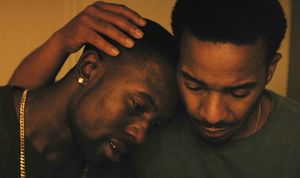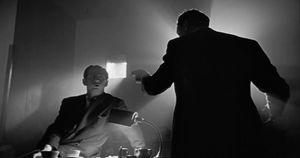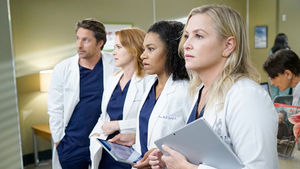Lighting for Video
Introduction
Everything we do with cameras and lenses is about capturing light. A scene may be lit with available light--using natural or man-made light that is already at the location--or with lighting the the filmmaker controls. The way a scene is lit influences both how we understand the scene and how we experience it emotionally. Light directs the viewer's attention. It provides cues, creates depth, surface texture, or can flatten, compress, and smooth over features. Quality of light has a powerful effect on the mood of a scene.
Light
To start to understand light, look at a painting, photograph, or scene in a movie and ask yourself:
- What kind of shadow does it cast (crisp or diffuse)?
- What angle is it coming from?
- How bright is it (intensity)?
- How bright is it relative to other lights (lighting contrast)?
- What color is it?
When you are ready to shoot ask yourself the same questions.
Qualities of Light
The hardness of light is a way to describe the type of shadow it casts. Hard Light, also called specular light, is made up of parallel rays that produce clean, hard shadows that outline the shapes of objects. Hard light is crisp and can feel harsh.
Soft, or diffuse, light is less directional. It's comprised of rays of light going in many different directions and produces gentler shadows.
- Hard light can be produced artificially with lensed or focused lamps that emit a clearly directed beam.
- Soft light sources produce a broad and even glow, not a beam of light. Soft sources are often indirect.
Directionality
Light coming from the general direction of the camera is called a front light. Front axial light comes from very near the camera's lens, where most of its shadows are mostly not visible from the camera position.
Full frontal light can be thought of like light emitting from the number 6 on a clock face whose center is the subject (the camera is also positioned at the number 6.) This type of lighting can be harsh and flattening. Fashion photos often deploy full frontal lighting.
Offset light (the light around 5 or 7) and three-quarter front light (around 4:30 or 7:30) can be used for portraiture when more shadowing is desired.
Full side light (around 3 or 9) provides good modeling and indication of texture (since texture is revealed by the pattern of tiny individual shadows visible from the camera position). Side light can be dramatic and produces shadows that fall clearly across the frame and reveal depth of the objects in the space.
Backlight comes from behind (and usually above) the subject. It tends to outline the subject's shape to differentiate it from the background. Backlight can produce a bright edge or halo on a subject's hair and shoulders. Contre-jour is when a backlight predominates and it can create a moody or romantic effect. If the background is bright and no light falls on the camera side of the subject, the subject will be in silhouette.
The vertical angle of the light will also impact the lighting.
Top light, which shines down from directly above the subject, can make deep shadows in eye sockets. Top light can also make landscapes seem more two-dimensional, because few shadows are visible (think of sunlight at noon or on a bright day). Most filming is done with lights angled about 40 degrees from the floor or slightly higher for the best modeling without casting excessive shadows.
Underlighting, in which the light comes up from below the subject and casts shadows upward, occurs rarely in nature and is used often in horror films.
Lighting Contrast
Much of the atmosphere and mood of a lighting scheme is determined by lighting contrast. This is the relationship in light intensity between brightly lit areas and shadow areas. Lighting contrast results from the relationship of the key light (which casts the primary shadows) and the fill light (that fills the key's shadows).
Low-key lighting design has high lighting contrast with dark shadow areas predominating over light areas. Low-key lighting is associated with night, emotion, tension, mystery, etc. Film-noir movies utilize this type of lighting.
High-key lighting has low contrast and bright tones predominate, making everything appear bright and cheery. This is used for daytime scenes, comedy, and most studio-shot television shows. In high-key lighting, the light is evenly distributed around the set, which is convenient for situations in which several cameras are shooting simultaneously from different angels or when an actor must be able to move freely around the set without walking into deep shadows.





